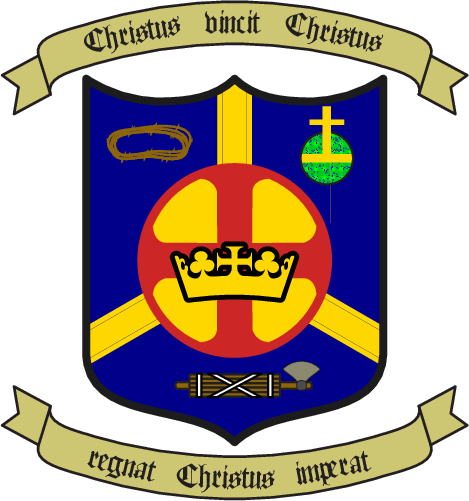
☩
AMDG
AMDG
The CCR's headwear, the rostripetasus (tradtionally known in English as a bycocket and in French as a chapeau à bec, or “beaked hat”) is an ancient hat that was popular in the later Middle Ages. It most often associated with Robin Hood, and has even been called a “Robin Hood hat”.
The bycocket carries connotations of daring, heroism, and loyalty to a true king whom many perceive to be absent. It is also noticeably different from most modern headgear, making it distinctly ceremonial.
Planché, who wrote a fairly comprehensive history of European clothing, gives it many names: abacot, abococke, abococked, abococket, bycocket, bicoque.1 He states that it was worn in the fourteenth and fifteenth centuries, primarily by royal and noble persons. It was worn by both women and men, but by far more often by men; indeed, animals are drawn wearing them more often than women are.2 It is mentioned as being worn by archers particularly, and it often carried some form of decoration on the brim or crown, along with a plume or cockade attached. Robin Hood, of course, is most frequently depicted with a feather in his.
The CCR uses the bybocket (in Latin, the rostripetasus, “beak-hat”) due to two primary factors. First, through its association with Robin Hood, it carries connotations of daring, heroism, and loyalty to a true king who retains authority, even though many perceive him to be absent. Second, it is noticeably different from most modern headgear. This makes it well-suited for ceremonial use.
We also wear a white cockade on the rostripetasus: a feather, a ribbon, a plume, or something similar. This is attached to the left side. The white cockade has long been a symbol of those who defend the rights of Christ the King in society; it was used as a sign by the Jacobites, when they defended the rights of the Catholic line of the kings of England, and the defenders of Catholic France wore it against the tricolor of the Revolution. We wear it, as well, to give honor to them, to tell others of our loyalty to the Supreme King of Kings, and to remind us to follow their example.
We wear the rostripetasus at meetings, when we are in processions, and when engaged in any public ceremony. The rostripetasus is an honor to wear, and its dignity should be scrupulously protected.
Christus vincit! Christus regnat! Christus imperat!